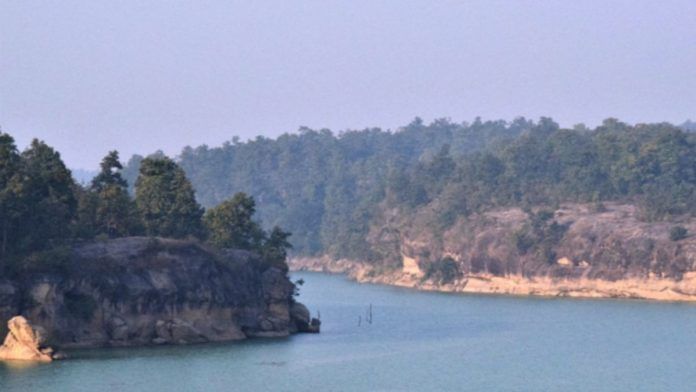Thank you dear subscribers, we are overwhelmed with your response.
Your Turn is a unique section from ThePrint featuring points of view from its subscribers. If you are a subscriber, have a point of view, please send it to us. If not, do subscribe here: https://theprint.in/subscribe/
The Western Ghats, which are over 1,600 kilometers long and run along India’s western border, are one of the oldest mountain ranges in the world and have the most different types of plants and animals. The Ghats are a UNESCO World Heritage Site and one of the eight places in the world with the most biodiversity. They control monsoons, protect species that only live there, stabilize river basins, and provide for millions of people who depend on its forests, water, soils, and ability to control the weather. The Ghats are very important for the environment, but they are going away quickly because they are always being built on. Not only are trees being cut down, but an old biological system that used to hold peninsular India together is also falling apart.
Over the previous century, dense forest cover in the Western Ghats has been reduced to fragmented, scattered areas, and the quality of remaining forests has deteriorated dramatically. Rivers originating in the Ghats, such as the Godavari, Krishna, Cauvery, Sharavathi, and Periyar, rely on intact forests for groundwater replenishment and regulated flows. As forest health deteriorates, water systems become more unpredictable, contributing to monsoon flooding and summer scarcity. This pattern of ecological instability is getting worse because of the deadly floods in Kerala in 2018, landslides that happen from time to time in Kodagu and Wayanad, long dry spells in the Cauvery basin, and soil slips that happen again and again in the Nilgiris.
Even with these signs, things are still moving quickly in the area. Gujarat, Maharashtra, Goa, Karnataka, Kerala, and Tamil Nadu all have the Ghats, which are big projects for infrastructure and industry in the name of growth. Highway expansion projects like NH-66, hill corridors like the Thalassery-Mysuru link, and new railway lines like Hubballi-Ankola have made deep cuts through areas where elephants, tigers, and other animals live. When looking at these projects, environmental clearances usually only look at them one at a time and don’t think about how several linear invasions will affect the whole environment. Quarries and mines make the problem worse. Mining iron ore in Goa, bauxite in the Konkan region, and uncontrolled stone quarrying in Kerala and Karnataka are just a few examples of how these activities have made slopes less stable, messed up water flow, and hurt people’s jobs. Tea, coffee, rubber, and monoculture lumber plantations that don’t get enough water and aren’t good for the environment have taken the place of rich evergreen forests.
These pressures persist despite the fact that India has issued two significant scientific warning documents about the region. The 2011 Gadgil Committee Report (Western Ghats Ecology Expert Panel) proposed that 64 percent of the Ghats be designated as Ecologically Sensitive Areas, with an emphasis on community-led conservation and stringent regulation of mining and big infrastructure. However, political opposition across states resulted in its outright rejection. The subsequent Kasturirangan Committee Report lowered the sensitive region to 37% and excluded human settlements, so diminishing ecological protection. Even this modified proposal has been partially and unevenly implemented. As a result, huge portions of the Ghats are still vulnerable to fragmentation, quarrying, and land conversion, with no regulatory uniformity among states.
The communities in the Ghats, which include Adivasi tribes like the Kurumba, Kadar, Irula, and Paniya, as well as families that depend on the forest, are among the hardest hit. They earn money by gathering non-timber forest products, fishing, farming on a small scale, collecting honey, and growing medicinal herbs. Climate change and the deterioration of the environment are putting these ways of life at risk. Landslides destroy homes, rain that comes and goes hurts crops, and fewer trees push animals into fields and homes. People and elephants and people and tigers have been fighting a lot more in Kerala, Karnataka, and Tamil Nadu. A lot of development projects don’t really talk to the public, and the ways to pay people back aren’t clear or good enough.
Every problem in the Ghats gets worse because of climate change. The areas around the mountains are getting warmer faster than the mountains themselves. Researchers have found that red and orange rainfall alerts are becoming more common in the Ghats hills. This means that the environment is getting less stable than it used to be. Forests can handle shocks if you leave them alone. But when slopes are quarried, mined, or cut up to make roads, any change in the weather can be very dangerous.
A more sustainable approach would include recognizing the Ghats as a climate-critical system. The Western Ghats are dying not because India lacks scientific understanding or policy recommendations, but because political and commercial interests continue to outweigh natural restrictions. If this trend continues, the effects will be permanent. The future of this mountain range will affect the water security, biodiversity, monsoon stability, and disaster resilience of peninsular India. It is not an environmental choice to save the Western Ghats; it is a cultural need. India has been safe from the mountains for millions of years. The question is whether India will keep protecting them as long as it can.
——————————————————————————————————————–
About the authors:
Anusreeta Dutta is a columnist and climate researcher with prior experience in political research and ESG analyst.
Tanmay Mathews Kottuppalli is a political research analyst.


